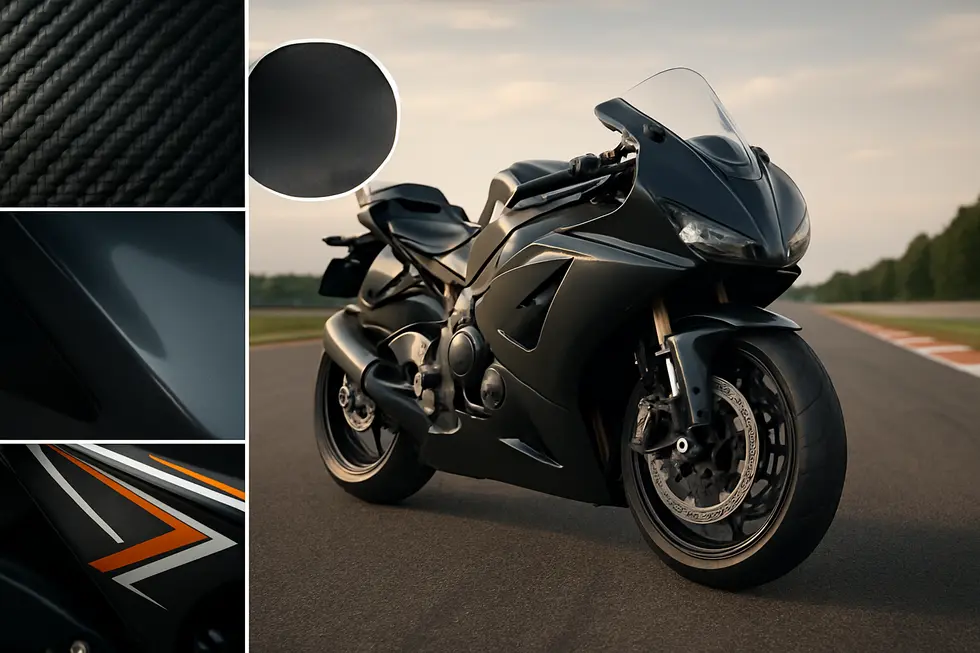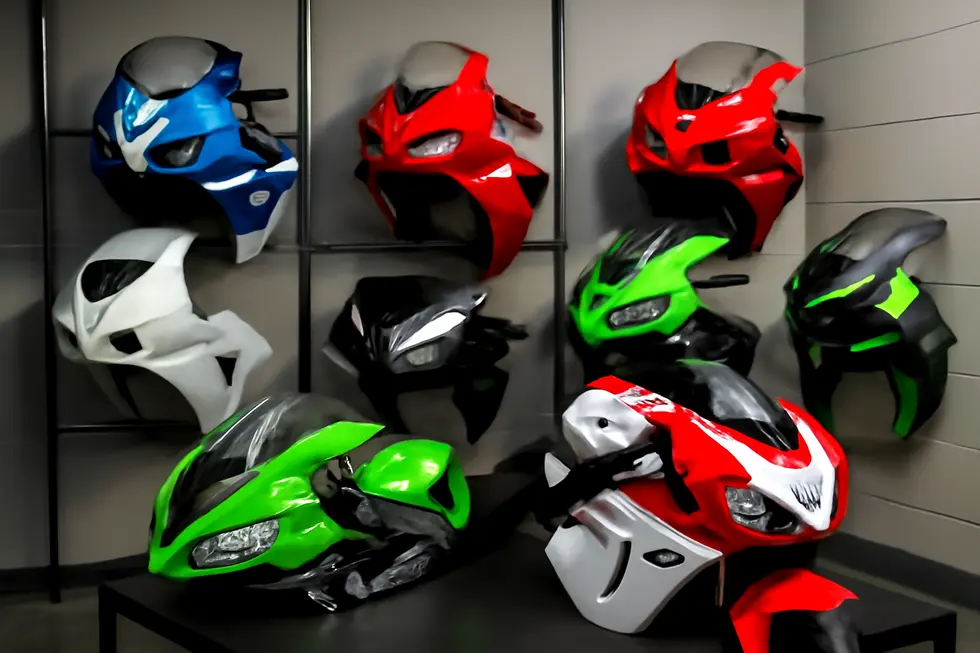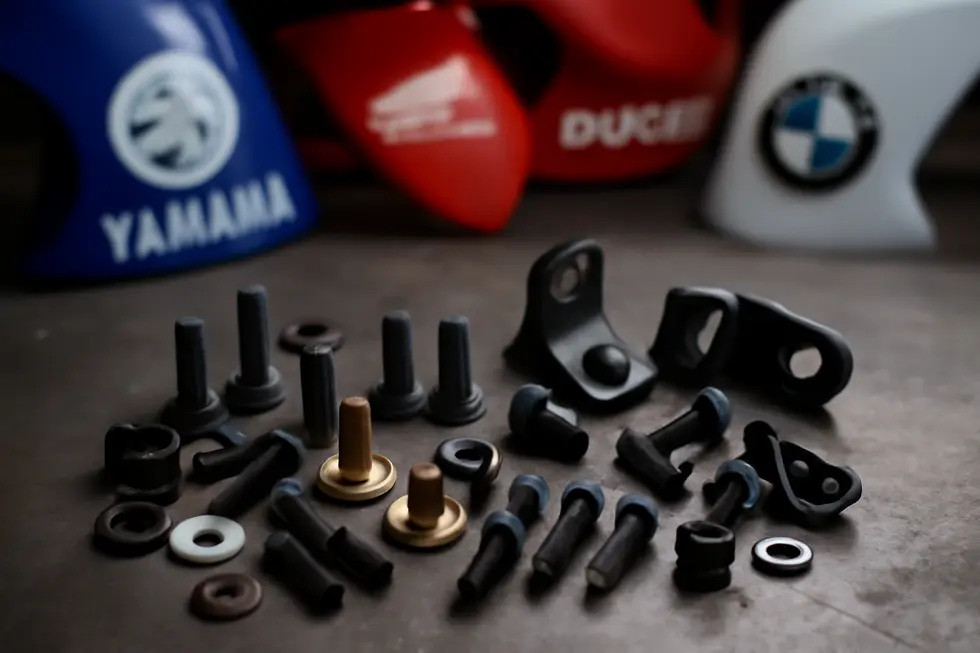Mastering Front Fairing Motorcycles: Innovation, Performance, and Versatility
August 25, 2025 | by summitfairings
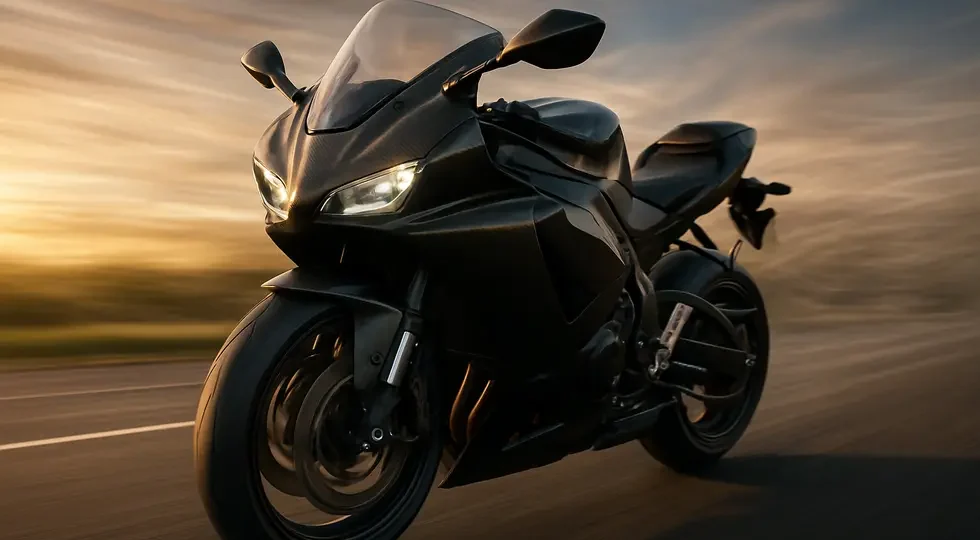
Introduction
Front fairings on motorcycles serve as more than just stylistic enhancements—they are pivotal aerodynamic components that optimize performance, protect riders, and offer customization opportunities. For business owners in the motorcycle aftermarket and manufacturing sectors, understanding the technical design principles, the specificity of model-based fairing kits, and the growing appeal of universal and semi-custom options is essential to capturing market demand and improving product offerings. This exploration begins with the materials and design innovations that enable effective front fairings, moves into the performance advantages of model-specific kits tailored for leading brands, and concludes with how universal fairings provide versatility without sacrificing rider protection or style. Each chapter delves deeply into these critical facets, offering insights that support strategic business decisions and product development in this competitive segment.
Tables of Contents
Chapter 1: Technical Design and Materials of Front Fairing Motorcycle
- Material Innovations Shaping Front Fairing Performance: ABS Plastic, Fiberglass, and Carbon Fiber
- Balancing Aerodynamic Precision and Structural Strength in Front Fairing Engineering
- Precision Installation and Fitment: Integrating Design and Materials in Front Motorcycle Fairings
- Balancing Aerodynamics and Lightweight Innovation for Superior Fairing Performance
- Balancing Rider Protection and Visual Appeal: The Dual Role of Front Fairing Materials and Design
Chapter 2: Model-Specific Front Fairing Motorcycle Kits and Their Performance Benefits
- Cutting-Edge Technologies Driving Performance Gains in Model-Specific Front Fairing Kits
- Economic Influence and Market Trends Shaping Model-Specific Front Fairing Kits
- Navigating Global Dynamics: Geopolitical Influences on the Production and Distribution of Model-Specific Front Fairing Kits
- Advancing Rider Safety and Societal Impact Through Model-Specific Front Fairing Kits
- Advancing Performance and Personalization: The Evolution of Model-Specific Front Fairing Kits
Chapter 3: Universal and Semi-Fairing Front Fairing Motorcycle Options: Versatility and Customization
- Innovations Driving Versatility in Universal and Semi-Fairing Motorcycle Front Fairings
- Economic Influence of Universal and Semi-Fairing Front Fairings: Driving Versatility and Market Growth
- Emerging Customization Trends in Universal and Semi-Fairing Front Fairings: Merging Style with Adaptability
- Balancing Style and Function: Rider and Society Influences on Universal and Semi-Fairing Motorcycle Front Fairings
- Navigating Global Markets and Geopolitical Dynamics Shaping Universal and Semi-Fairing Motorcycle Front Fairings
Chapter 1: Technical Design and Materials of Front Fairing Motorcycle
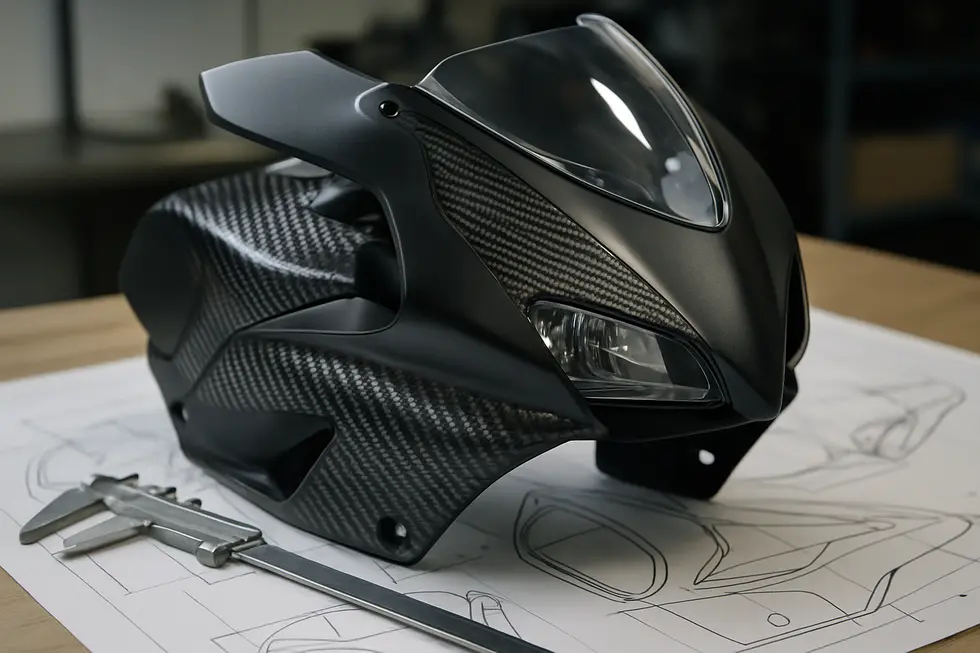
1. Material Innovations Shaping Front Fairing Performance: ABS Plastic, Fiberglass, and Carbon Fiber
Front fairings on motorcycles rely heavily on the material properties of ABS plastic, fiberglass, and carbon fiber to balance performance, durability, and cost in their design. ABS plastic remains a popular choice across mass-produced motorcycles due to its cost-effectiveness and ease of manufacturing. It offers good impact resistance and a relatively light weight, though it is heavier than carbon fiber. Its adaptability to smooth or textured finishes makes painting and customization straightforward, providing riders with aesthetic flexibility. Frequently used in factory fairings, ABS ensures sufficient durability for daily riding and moderate protection from wind and debris.
Fiberglass offers a middle ground—its moderate cost is paired with increased rigidity compared to ABS plastic. It delivers respectable impact resistance combined with a flexibility that helps prevent sudden breakage under stress. This makes fiberglass favored in aftermarket fairing kits, as it allows for some performance enhancement without escalating expenses. Its lightweight nature also aids in reducing drag while maintaining structural integrity.
Carbon fiber exemplifies the pinnacle of material performance in front fairings by combining exceptional strength with ultra-lightweight construction. This material dramatically improves handling and acceleration by minimizing weight at the front of the motorcycle. However, carbon fiber’s high cost and complex manufacturing requirements demand precision engineering to prevent stress failures. Its stiffness also allows aerodynamic shapes that reduce drag effectively beyond the capabilities of plastic or fiberglass.
Manufacturers often blend these materials strategically, balancing cost, durability, and weight to meet diverse rider needs. For example, carbon fiber front panels paired with ABS rear sections optimize weight savings without prohibitive costs. Each choice reflects priorities such as budget, aesthetic goals, and riding conditions. Understanding these material characteristics is essential to designing front fairings that meet modern standards for performance and rider comfort.
For an in-depth look at tailored front fairing solutions and material options, explore the ultimate source for affordable motorcycle fairings.
2. Balancing Aerodynamic Precision and Structural Strength in Front Fairing Engineering
The engineering of a motorcycle’s front fairing revolves around mastering both aerodynamic efficiency and structural resilience. Aerodynamically, the fairing is sculpted to reduce drag by presenting a sleek, compact profile that guides airflow smoothly around the bike. This streamlining minimizes air resistance, helping increase top speeds and improve ride stability. Design elements such as integrated winglets and side spoilers are tactically employed to generate downforce, which enhances tire grip and handling during high-speed cornering. These subtle aerodynamic tweaks allow riders to maintain control and reduce fatigue caused by wind pressure.
From a structural standpoint, the fairing must support aerodynamic loads while remaining lightweight to avoid hindering performance. To achieve this, composite materials like fiberglass and carbon fiber are chosen for their excellent strength-to-weight ratios, ensuring durability without excess mass. The underlying framework frequently incorporates high-strength metals such as chromium-molybdenum (Chromoly) steel. This metal forms a robust yet lightweight skeleton that supports the fairing, capable of withstanding vibrational stresses and aerodynamic forces encountered during riding. Advanced designs also use the engine as a stressed member, integrating it into the frame to distribute structural loads more efficiently and reduce overall chassis weight.
Together, these aerodynamic and structural strategies create front fairings that not only boost speed and handling but also provide rider protection and comfort. Racing motorcycles exemplify this synergy by featuring tight, aerodynamic shells combined with engineered frames that optimize strength without compromise. Modern sportbikes increasingly adopt aerodynamic winglets and fairing add-ons to enhance downforce, directly influencing cornering stability.
This fusion of aerodynamic refinement and engineered strength represents the core of front fairing technology, balancing dynamic performance with structural integrity to meet the rigorous demands of both racing and everyday riding. For visual insights into these design principles in action, see further reference at https://www.instagram.com/p/DNYTdQXsXya/. For more on customization options and fairing materials, visit Explore the Best Motorcycle Fairings.
3. Precision Installation and Fitment: Integrating Design and Materials in Front Motorcycle Fairings
The installation and fitment of a motorcycle’s front fairing form a crucial bridge between technical design and material application, directly impacting both aesthetics and performance. Effective integration begins with careful alignment and methodical fastening, which ensures the fairing’s aerodynamic benefits and structural stability are fully realized. Components such as bezel vents are typically affixed using double-sided tape, providing secure adhesion while preserving delicate surfaces. Meanwhile, clip reinsertion demands cautious alignment to avoid damage, where forcing can lead to cracking or warping of the commonly used ABS plastic or composite fairing materials.
Headlight assemblies require precise positioning, often facilitated by Torx screws tightened within manufacturer-specified torque ranges—usually around 22-32 inch-pounds. This torque control protects the integrity of plastic parts, preventing deformation while securing the assembly. Trim pieces and headlight doors similarly benefit from gentle fastening techniques; supporting the fairing during screw installation prevents misalignment and maintains the intended aerodynamic profile shaped by design features like Sharknose styles.
Mounting brackets and sliders present in modern fairings enable adjustable fitment, allowing symmetrical height and lateral positioning before final tightening. This flexibility counters installation variances and ensures even seating of the fairing along the frame, which is critical not only for visual balance but also to withstand wind pressures encountered at speed.
Materials science also guides installation care; plastics and composites require delicate handling to avoid cracks induced by overtightening or misalignment. Spacers are often used around headlight mounts to achieve exact distances from the fairing surface, reflecting the technical synergy between material properties and aerodynamic form.
By progressing through a methodical sequence—securing bezel vents, clips, then headlight assemblies, followed by trim and the main panel—the installation respects design intent and material constraints. This integration approach preserves functional and stylistic integrity in the front fairing, ensuring it performs reliably under real-world conditions.
For further insights into the variety and specificity of fairings designed for different motorcycles, visit Explore Summit Fairings: Your Go-To Destination for Motorcycle Fairings.
Reference: [1] Procedures including torque specs and order of component installation.
4. Balancing Aerodynamics and Lightweight Innovation for Superior Fairing Performance
Optimizing the performance and weight of motorcycle front fairings demands a harmonious blend of aerodynamic precision and advanced material technology. The fairing’s shape is sculpted to minimize air resistance while enhancing stability. Smooth contours, tapered edges, and integrated winglets work together to reduce drag and generate downforce, improving handling at speed. For instance, winglets positioned at the front edge can create substantial downforce, anchoring the bike during aggressive cornering and high-velocity runs, without compromising airflow critical for cooling.
Material selection plays an equally vital role. Lightweight composites, such as carbon fiber, offer remarkable rigidity with reduced mass, allowing for sharper aerodynamic profiles without the penalty of added weight. Injection-molded ABS plastics provide strength and precise fitting, customized to specific motorcycle models to ensure seamless integration. These materials also absorb vibrations and impacts effectively, contributing to long-term durability.
Beyond shaping and materials, the front fairing’s design is intricately linked to airflow management. Channels and vents are engineered to direct air efficiently toward radiators or oil coolers, maintaining optimal engine temperatures during extended rides at elevated speeds. This careful integration prevents performance loss due to overheating while preserving the aerodynamic advantage.
Structural aspects are designed to enhance overall chassis rigidity. Mounting points are strategically positioned to contribute stability without unnecessarily increasing mass. This ensures the fairing supports dynamic forces from wind and road conditions while maintaining the bike’s light and agile feel.
Through the fusion of finely tuned aerodynamics, cutting-edge lightweight materials, and airflow innovation, front fairings achieve a sophisticated balance that elevates motorcycle performance and rider experience. For more insights into precise fairing solutions tailored to your bike, exploring specialized motorcycle fairings resources can provide valuable options.
More on aerodynamic design principles for performance motorcycles can be found in related technical studies on airflow optimization.
5. Balancing Rider Protection and Visual Appeal: The Dual Role of Front Fairing Materials and Design
The design and materials of a motorcycle’s front fairing artfully combine protection and aesthetics to elevate both rider experience and bike performance. Front fairings utilize advanced materials such as fiberglass, ABS plastic, and carbon fiber, each delivering a unique mix of durability, flexibility, and weight savings. Fiberglass offers impact resistance and pairs well with acrylic windscreens to shield riders from wind and debris effectively. ABS plastic is prized for its toughness and UV resistance, ensuring the fairing withstands environmental wear while maintaining a sleek appearance. Carbon fiber, while lightweight, enhances aerodynamic efficiency by reducing drag, directly boosting handling and speed.
Aerodynamics play a critical role in protective design. Sculpted shapes and innovative features like integrated winglets improve high-speed stability by directing airflow with precision. This meticulous shaping balances wind deflection for rider comfort with drag reduction for optimized performance. Beyond function, the front fairing also serves as a canvas for stylistic expression. Clean, sporty lines complement a motorcycle’s character, whether reflecting racing heritage or contemporary trends. Glossy or matte finishes allow for customization, while precision-fit designs ensure seamless integration with the frame.
This fusion of form and function means riders can enjoy enhanced safety benefits alongside personalized visual appeal. Choices in fairing finish and paintwork allow owners to create both subtle and bold statements without sacrificing protection or aerodynamic advantages. Through careful material selection and design innovation, front fairings remain essential components that safeguard the rider and elevate the motorcycle’s presence on the road.
For those exploring a wide range of tailored options, explore the best motorcycle fairings at Summit Fairings offers an excellent resource demonstrating this diverse balance of protection and style.
Chapter 2: Model-Specific Front Fairing Motorcycle Kits and Their Performance Benefits
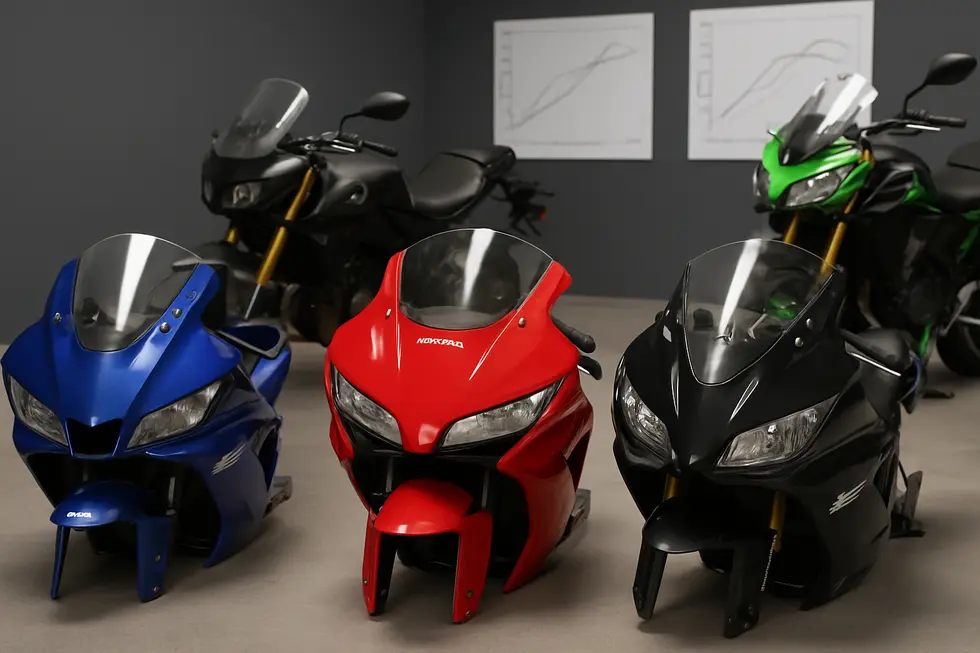
1. Cutting-Edge Technologies Driving Performance Gains in Model-Specific Front Fairing Kits
Model-specific front fairing motorcycle kits have entered a new era of technological sophistication, integrating advanced aerodynamic engineering, innovative materials, and intelligent systems. Utilizing computational fluid dynamics (CFD), engineers create fairings sculpted to channel airflow smoothly around the rider and bike. This meticulous aerodynamic design significantly reduces drag and helmet buffeting, improving stability and diminishing rider fatigue on long journeys. For touring motorcycles, such precision in shaping front fairings enhances ride quality while maximizing fuel efficiency.
Material science advancements are equally transformative. Lightweight yet robust composites like carbon fiber and high-grade ABS plastics dominate modern kits, striking a balance between durability and weight reduction. Beyond performance, sustainability is becoming a focus, with manufacturers experimenting with recycled and biodegradable polymers to minimize environmental impact without sacrificing strength.
Smart integration marks a new frontier, with some fairings embedding IoT-enabled sensors. These components offer real-time diagnostics and condition monitoring, empowering riders with immediate feedback and predictive maintenance alerts. Such technology not only ensures mechanical reliability but also elevates overall safety.
Customization options have expanded through modular design, allowing riders to personalize windshields, ventilation systems, lighting, and storage solutions without compromising aerodynamic integrity. This flexibility supports individual riding styles and needs while maintaining optimized airflow and protection against weather elements.
Collectively, these innovations translate into tangible performance benefits: improved top speeds from reduced drag, enhanced rider comfort through diminished wind turbulence, adaptive weather protection from adjustable vents, and precise handling aided by electronically assisted chassis management. This synergy of materials, design, and technology exemplifies the evolution of model-specific fairings, delivering both functional superiority and tailored aesthetics.
Explore more about how advanced fairings elevate ride experience at Summit Fairings’ expert insights.
For additional context on aerodynamic improvements in models like Harley-Davidson’s Sharknose and Batwing fairings, see further details here: https://www.motorcycle.com/features/2025-harley-davidsons-road-glide-and-street-glide.html
2. Economic Influence and Market Trends Shaping Model-Specific Front Fairing Kits
Model-specific front fairing kits have emerged as a pivotal force in the motorcycle aftermarket, profoundly impacting economic activity and market dynamics. By catering to a niche segment of riders seeking personalized upgrades, these kits satisfy demand for enhanced performance and distinctive aesthetics. This focus on precise fitment and tailored design attracts both casual riders and enthusiasts, fueling a robust aftermarket economy centered on customization rather than new motorcycle purchases.
The production and sale of these kits support employment across manufacturing, distribution, and retail sectors while encouraging innovation in materials and aerodynamic design. Premium pricing for high-quality, lightweight, and durable fairings reflects their value in improving handling, reducing drag, and enhancing rider comfort. Such pricing also enables manufacturers to distinguish their brandlines and reinforce customer loyalty, as riders appreciate improvements specifically crafted for their motorcycle models.
Performance gains from these kits include measurable weight reductions and aerodynamic optimization. For example, some kits can offer substantial weight savings compared to competitors, leading to quicker acceleration, improved stability, and better fuel economy. Additionally, the design of these fairings extends rider protection by shielding from wind and debris, enhancing long-distance comfort and safety through improved lighting and durability.
By supplying comprehensive installation hardware and guides, manufacturers lower barriers to entry, enabling more riders to perform DIY upgrades and broadening market reach. This accessibility strengthens the connection between brands and consumers, fostering continued investment in model-specific solutions that maintain a competitive edge and cater to evolving rider preferences. Premium brands strategically use these fairings to reinforce market segmentation, maintaining exclusivity and justifying higher price points aligned with performance-oriented sportbike markets.
Ultimately, model-specific front fairing motorcycle kits sustain and stimulate a dynamic aftermarket ecosystem that benefits riders, manufacturers, and retailers alike. They exemplify how specialized innovation can elevate the motorcycle experience while generating meaningful economic impact within the industry. For riders exploring their options, discovering unmatched choices in motorcycle fairings at Summit Fairings offers valuable insight into the diversity of available solutions.
More details on a complete approach to performance-enhancing fairings can be found here: https://bmcnextlevel.com/products/bmc-complete-fairing-kit
3. Navigating Global Dynamics: Geopolitical Influences on the Production and Distribution of Model-Specific Front Fairing Kits
The production and distribution of model-specific front fairing motorcycle kits are deeply intertwined with complex geopolitical dynamics that shape the availability, cost, and innovation of these specialized components. Manufacturing hubs, predominantly located in Asian countries such as China and Taiwan, benefit from advanced industrial infrastructure and competitive labor markets, making them primary sources for high-quality materials like composites and fiberglass. However, this regional concentration exposes the supply chain to vulnerabilities whenever geopolitical tensions arise, such as shifting trade relations or export controls.
Tariffs and trade policies between major economic powers directly impact the costs and lead times of front fairing kits. Alterations in import/export regulations can restrict access to crucial raw materials or finished components, influencing pricing and distribution channels across global markets. Moreover, national industrial policies encouraging local production or technological self-reliance prompt manufacturers to diversify suppliers to reduce dependency on any single country, mitigating risks tied to international conflicts or embargoes.
Recent declines in certain machinery exports from Taiwan to China illustrate how political disputes tangibly affect component flow crucial for assembling precise aerodynamic fairings. This geopolitical backdrop shapes not only the commercial landscape but also the innovation pace, as manufacturers balance performance-driven design goals with supply stability.
Beyond geopolitical complexities, the performance advantages of model-specific front fairing kits remain clear. Custom-fit designs minimize aerodynamic drag, enhancing fuel efficiency and top speed. Lightweight, durable materials contribute to improved handling and acceleration while providing critical rider protection from wind and debris. These kits also enable aesthetic and functional customization, aligning motorcycle performance with rider preferences and model specifications.
Understanding these global influences is essential for appreciating the delicate balance between performance excellence and production realities in front fairing kits. For riders and industry stakeholders alike, keeping informed of these geopolitical shifts is vital to navigating the evolving marketplace and securing fairings that meet exacting standards of fit and function.
For further insights on motorcycle components and design, see Explore the Best Motorcycle Fairings at Summit Fairings.
Source: Analysis of trade relations impacting manufacturing hubs in Asia and shifts in Taiwan’s machinery exports to China.
4. Advancing Rider Safety and Societal Impact Through Model-Specific Front Fairing Kits
Model-specific front fairing motorcycle kits deliver critical safety enhancements alongside notable performance benefits, creating a comprehensive impact on both riders and society. By precisely fitting the contours of a particular motorcycle, these fairings optimize wind deflection, substantially reducing the wind pressure that riders face during longer journeys. This translates to less helmet vibration and reduced rider fatigue, enabling improved focus and control, which are essential for accident prevention. Furthermore, many modern kits feature integrated lighting solutions such as daytime running lights (DRLs) and switchback turn signals. These lighting technologies bolster motorcycle visibility in traffic by enhancing the bike’s presence without blinding other drivers. Clear signaling through switchback indicators helps nearby motorists better interpret rider intentions, significantly reducing collision risks on busy roads.
Beyond visibility and comfort, model-specific fairings contribute to improved ergonomics by promoting ideal rider posture, which enhances control and reduces strain during operation. This ergonomic advantage reinforces rider confidence and responsiveness—key factors in avoiding accidents. Performance-wise, the tailored designs minimize aerodynamic drag, allowing for more stable handling and better fuel efficiency. Lightweight construction further aids in acceleration and maneuverability, without compromising compatibility with onboard safety electronics like ABS and traction control systems.
On a broader societal level, these safety improvements help lower accident rates, thus reducing the burden on emergency response systems and healthcare resources. Enhanced comfort may encourage riders to adopt full protective gear more consistently, fostering safer riding cultures overall. This multifaceted impact highlights the essential role of model-specific front fairings in harmonizing performance, rider protection, and public safety.
For riders seeking expertly tailored solutions that blend functionality with improved road presence, exploring specialized front fairing kits can be transformative. To learn more about available options and their technical advantages, visit discover affordable motorcycle fairings at Summit Fairings.
For a deeper look at how these lights enhance safety, refer to Eagle Lights’ explanation of switchback turn signals and daytime running lights source.
5. Advancing Performance and Personalization: The Evolution of Model-Specific Front Fairing Kits
Model-specific front fairing kits represent the cutting edge of motorcycle design, seamlessly blending aerodynamic innovation with customization to elevate overall performance and rider experience. These kits are engineered to precisely fit particular motorcycle models, ensuring optimal integration of form and function. One of the most impactful advancements is the refinement of aerodynamic profiles, which dramatically reduce air resistance while enhancing stability. For instance, modern fairings minimize exposed surface areas to streamline airflow and incorporate strategic winglets that generate downforce, increasing front-wheel grip during high-speed maneuvers and braking. This careful management of airflow not only improves handling precision but also mitigates destabilizing crosswinds, allowing riders to confidently push throttle and brake limits during tight cornering.
Customization trends have evolved from purely visual upgrades to encompass performance-driven enhancements. Lightweight materials such as carbon fiber reduce the kit’s mass, contributing to quicker acceleration and sharper handling responsiveness. Meanwhile, aftermarket options offer tailored aesthetics with options for personalized colors, logos, and finish materials, enabling riders to express individuality without compromising aerodynamic efficiency. User-friendly features like pre-drilled mounting holes simplify installation, ensuring that performance benefits are accessible without complicated fitting processes.
Beyond streamlining and stability, advanced fairings also optimize engine cooling by directing airflow strategically to the cooling circuits, which enhances reliability on demanding road or track conditions. Quantitative improvements, such as notable percentage gains in water and oil cooling efficiency, highlight the comprehensive value these kits add.
Together, aerodynamic refinement and customization create front fairing kits that do more than protect or style a motorcycle—they actively shape its dynamic character. Riders gain measurable advantages in speed, agility, comfort, and confidence. Those seeking the perfect balance between cutting-edge technology and personal expression will find these model-specific kits an essential upgrade, blending precision engineering with rider-centric customization.
For further insights into quality and variety, explore affordable motorcycle fairings at Summit Fairings. Detailed aerodynamic innovations can be reviewed in the official analysis of the 2025 Ducati Panigale V4S at Total Motorcycle.
Chapter 3: Universal and Semi-Fairing Front Fairing Motorcycle Options: Versatility and Customization
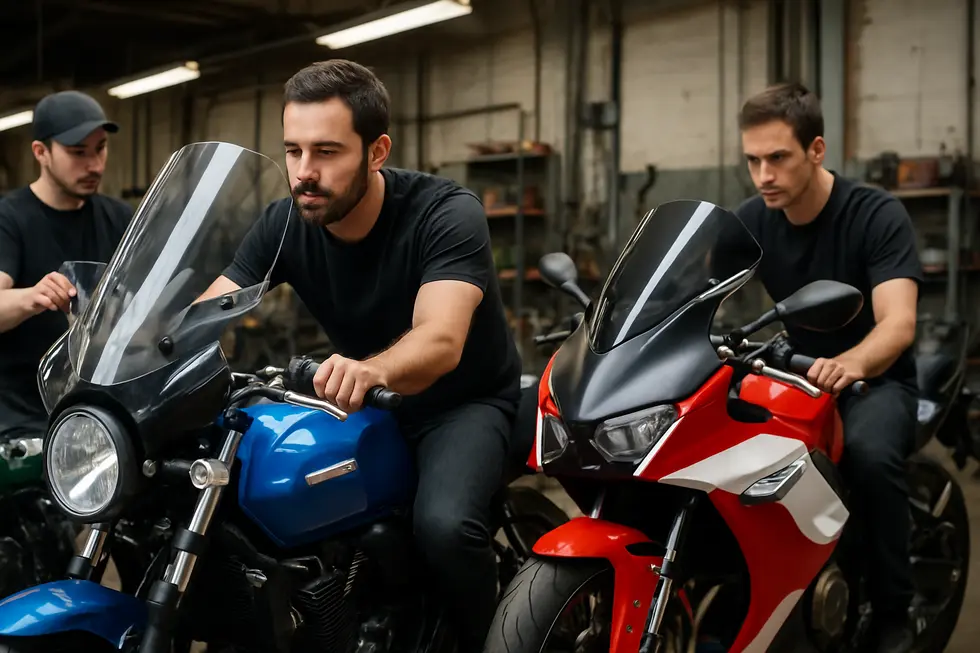
1. Innovations Driving Versatility in Universal and Semi-Fairing Motorcycle Front Fairings
Universal and semi-fairing front fairings embody a unique blend of technological innovation and adaptable design, offering riders practical customization without compromising functionality. These fairings are engineered to accommodate a broad spectrum of motorcycle styles and models, delivering aerodynamic benefits that are typically reserved for fully customized setups. Their versatility lies in streamlined construction techniques and advanced materials that promote both durability and lightweight efficiency.
Modern universal fairings often feature modular components that simplify installation and modifications, allowing riders to tailor wind protection and aesthetic characteristics to their preferences. For example, one-piece fairings with integrated windscreens and smooth bezels provide a clean, minimalist finish that suits sport and cruiser motorcycles alike. Semi-fairings push this adaptability further by focusing on partial coverage—such as headlight shrouds or small windscreens—offering subtle aerodynamic improvements and style enhancement without extensive bodywork modifications.
Technological advancements in composite materials, such as high-grade ABS plastics and carbon fiber blends, play a crucial role in the performance and customization of these fairings. These materials afford manufacturers the freedom to design complex shapes that reduce drag and withstand environmental stress, all while remaining lightweight. This enhances rider comfort by limiting wind buffeting and deflecting debris at varying speeds. Furthermore, precision manufacturing methods, including injection molding and advanced finishing processes, enable the creation of fairings with pre-drilled mounts and integrated hardware, facilitating bolt-on installation for a seamless fit.
The convergence of these technological and design elements empowers motorcycle enthusiasts to personalize their rides with fairings that deliver both visual appeal and functional advantages. Whether selecting a universal fairing that embraces a sleek, modern look or opting for a semi-fairing that complements the bike’s existing contours, riders benefit from improved aerodynamics and comfort without sacrificing flexibility. For deeper insights on diverse motorcycle fairing choices, explore unmatched selections at Summit Fairings.
More product details can be found at: Memphis Shades Cafe Fairing for Harley Dyna, Sportster, Indian Scout
2. Economic Influence of Universal and Semi-Fairing Front Fairings: Driving Versatility and Market Growth
Universal and semi-fairing front fairings significantly shape the economic landscape of the motorcycle industry by offering adaptable solutions that enhance versatility while fostering customization. These fairings often use materials like aluminum, steel, and advanced composites, striking a delicate balance between production costs and product durability. Import tariffs on steel and aluminum, such as those imposing a 50% tax in some markets, directly affect manufacturing expenses and retail pricing, challenging producers to optimize material choices without sacrificing quality. Meanwhile, high-end composites like carbon fiber provide performance benefits with lighter weight but can elevate costs due to complex fabrication.
The appeal of universal and semi-fairings lies in their broad compatibility, enabling manufacturers and retailers to streamline inventories and cater to a wider range of motorcycle models. This inclusivity creates greater consumer access to aerodynamic enhancements and weather protection, expanding the potential customer base beyond niche markets. As riders seek personalized features—from integrated lighting to windscreens that adapt to multiple bike styles—aftermarket demand flourishes, encouraging small businesses and specialty shops to innovate and supply creative customization options.
Additionally, these fairings contribute indirectly to cost savings through improved aerodynamics and fuel efficiency, aligning with growing environmental awareness among riders. Although motorcycles face scrutiny over emissions, enhanced fairings that promote better fuel economy appeal to the eco-conscious segment, possibly influencing purchasing decisions amid evolving regulations.
Together, these economic factors underscore how universal and semi-fairing front fairings not only enrich motorcycle aesthetics and function but also stimulate industry growth through accessible, versatile, and customizable products. For riders and manufacturers alike, this translates into a dynamic market boosted by cost-conscious innovation and expanding consumer engagement. Explore more about the diverse choices available in motorcycle fairings at Summit Fairings.
Reference: Analysis of tariff impacts on motorcycle components and market trends (U.S. International Trade Commission, 2020).
3. Emerging Customization Trends in Universal and Semi-Fairing Front Fairings: Merging Style with Adaptability
Universal and semi-fairing front fairings represent a dynamic frontier in motorcycle customization by blending adaptability with aesthetic personalization. Riders today no longer settle for off-the-shelf designs; instead, they seek unique expressions that enhance functional performance while showcasing individuality. Advances in technology such as 3D modeling empower artisans and enthusiasts to craft bespoke fairing components tailored to diverse motorcycle models and personal styles. This synergy of digital precision and creative craftsmanship opens expansive possibilities beyond traditional fairings.
The wide assortment of materials available—from lightweight plastics to robust metals—expands design freedom. Some riders prefer the minimalist look of stainless-steel brackets combined with compact windscreens, while others embrace fully enclosing fairings that emphasize aerodynamic flow and striking visual impact. Color customization and graphic applications have become increasingly popular, with classic silhouettes like the Kawasaki ZZR1100 frequently reimagined through bold palettes and logos to suit individual tastes without sacrificing performance benefits.
Modern customization trends also integrate innovative features such as LED lighting, which enhances visibility and adds a futuristic flair. Themed designs, including anime-inspired graphics, reflect cultural influences and personal interests, showcasing how front fairings double as a canvas for self-expression. Social media platforms illustrate this evolving landscape, displaying countless inventive fairing transformations that inspire riders worldwide.
This expanding versatility is supported by specialized resources offering comprehensive kits and installation guidance, enabling riders to confidently modify their motorcycles with universal or semi-specific parts. For riders interested in exploring these abundant options, this resource provides a helpful foundation on versatile and customizable motorcycle fairings. Explore the best motorcycle fairing options at Summit Fairings.
Discover more customization inspirations and examples at TikTok’s motorcycle fairings design page.
4. Balancing Style and Function: Rider and Society Influences on Universal and Semi-Fairing Motorcycle Front Fairings
The appeal of universal and semi-fairing front fairings lies in their unique ability to blend functionality with personal expression, a quality highly prized by riders and society alike. Motorcycle enthusiasts often seek fairings that not only improve aerodynamics and wind protection but also reflect their individual tastes and lifestyles. This dual demand fuels a diverse marketplace offering a broad spectrum of options—from minimalist windscreens to more extensive cafe-style fairings that can be mounted across multiple models. Such versatility allows riders to tailor both appearance and performance with relative ease.
From a societal viewpoint, fairings contribute to the motorcycle’s visual identity, where sleek, dynamic lines and color customization serve as forms of self-expression. This aesthetic impact is complemented by practical considerations: reduced wind resistance improves fuel efficiency and rider endurance on long journeys, enhancing comfort and safety in daily commutes or touring. The option to choose materials like lightweight carbon fiber or durable ABS plastic further empowers riders to find the ideal balance between weight, strength, and cost.
Customization extends beyond color and material choice, encompassing trim details such as headlight visor rings or streamlined bezels, which markedly shift a motorcycle’s character from retro charm to modern minimalism. This flexibility is essential, given the variety of rider preferences and the growing trend toward personalizing each aspect of the bike’s silhouette.
Moreover, universal and semi-fairings address the practical need for broad compatibility. Many kits are designed to fit a wide range of motorcycles, offering riders an adaptable solution that supports diverse riding styles—whether urban commuting, spirited weekend rides, or longer touring adventures. This accessibility, combined with aesthetic freedom, makes these fairings particularly popular among riders seeking both individuality and everyday usability.
For riders exploring these dynamic options, discovering affordable and customizable motorcycle fairings can be explored in detail through a dedicated resource for unmatched choices in motorcycle fairings.
Additional insights into universal touring windscreens and versatile cafe fairings highlight this trend’s breadth, illuminating how modern riders prioritize a harmonious blend of style, protection, and adaptability. (See more at Revzilla’s guide to cafe fairings and windscreens).
5. Navigating Global Markets and Geopolitical Dynamics Shaping Universal and Semi-Fairing Motorcycle Front Fairings
Universal and semi-fairing front fairings play a pivotal role in offering motorcycle riders adaptability and personalized style on a global scale. Their appeal lies in the ability to fit a wide range of bikes, transcending brand limitations while balancing aerodynamic performance with practical installation. The global motorcycle market reflects an increasing demand for such fairings, driven by riders’ desire to blend function with customized aesthetics suited to diverse riding environments—from urban commutes to long-distance touring.
However, this versatility owes much to broader geopolitical and economic forces that influence design trends and material accessibility. Trade policies and tariffs among manufacturing regions can significantly impact production costs and supply chain reliability. For instance, fluctuations in the availability of key materials like ABS plastic and carbon fiber, a result of geopolitical shifts or regional export controls, compel producers to innovate or seek alternative suppliers. These factors ripple through the market, affecting pricing and availability of universal and semi-fairing kits worldwide.
Regional preferences, shaped by cultural norms and safety regulations, further guide fairing design. Markets emphasizing rider protection often favor fairings with enhanced visibility and coverage, while others prioritize minimalist, lightweight solutions for agility and speed. This creates a vibrant ecosystem where fairings vary widely in style, from retro to aggressive sport influences, responding to local tastes and legal frameworks.
Customization remains a cornerstone of this segment. Riders personalize their motorcycles not only through fairing shapes but also with color schemes and accessory integration that reflect individual identity and usage needs. Such adaptability transforms motorcycles into lifestyle statements, supported by a dynamic aftermarket ecosystem offering diverse options. Exploring these evolving market trends and how global factors mold them offers valuable insight into the future of universal and semi-fairing front fairings.
For a deeper dive into customization trends and market influences shaping motorcycle fairings, see this detailed overview of affordable motorcycle fairings.
Final thoughts
Understanding front fairing motorcycles through the lenses of technical design, model-specific precision, and versatile universal options equips business owners with the knowledge to thrive in a competitive aftermarket and OEM environment. High-quality materials like ABS plastic and carbon fiber underpin innovative design solutions that improve aerodynamics and rider comfort. Model-specific fairing kits deliver unmatched performance benefits and exact fitment, appealing to serious riders and enthusiasts who demand precision. At the same time, universal and semi-fairing options cater to a wide audience eager for customization and style upgrade flexibility. Strategically incorporating these insights into product offerings empowers businesses to meet diverse consumer needs, optimize inventory, and enhance brand reputation. The front fairing motorcycle market remains a dynamic space where material science, design excellence, and customer-centric versatility intersect to create value-driven solutions for riders worldwide.
Ready to elevate your ride? Summit Fairings delivers premium, custom-fit fairings that blend style and durability. Whether you’re chasing speed or turning heads, we’ve got your bike covered. Don’t wait—transform your machine today. Click, customize, and ride with confidence. Your perfect fairing is just a few clicks away. Act now!
About us
We are one of the leading motorcycle fairing export sites, with over 3,000 styles across almost all motorcycle models. Buy from summitfairings.com, and pay 10-40% less than the prices on other sites. If you have any questions, we promise we will have your answer within six hours.
RELATED POSTS
View all

